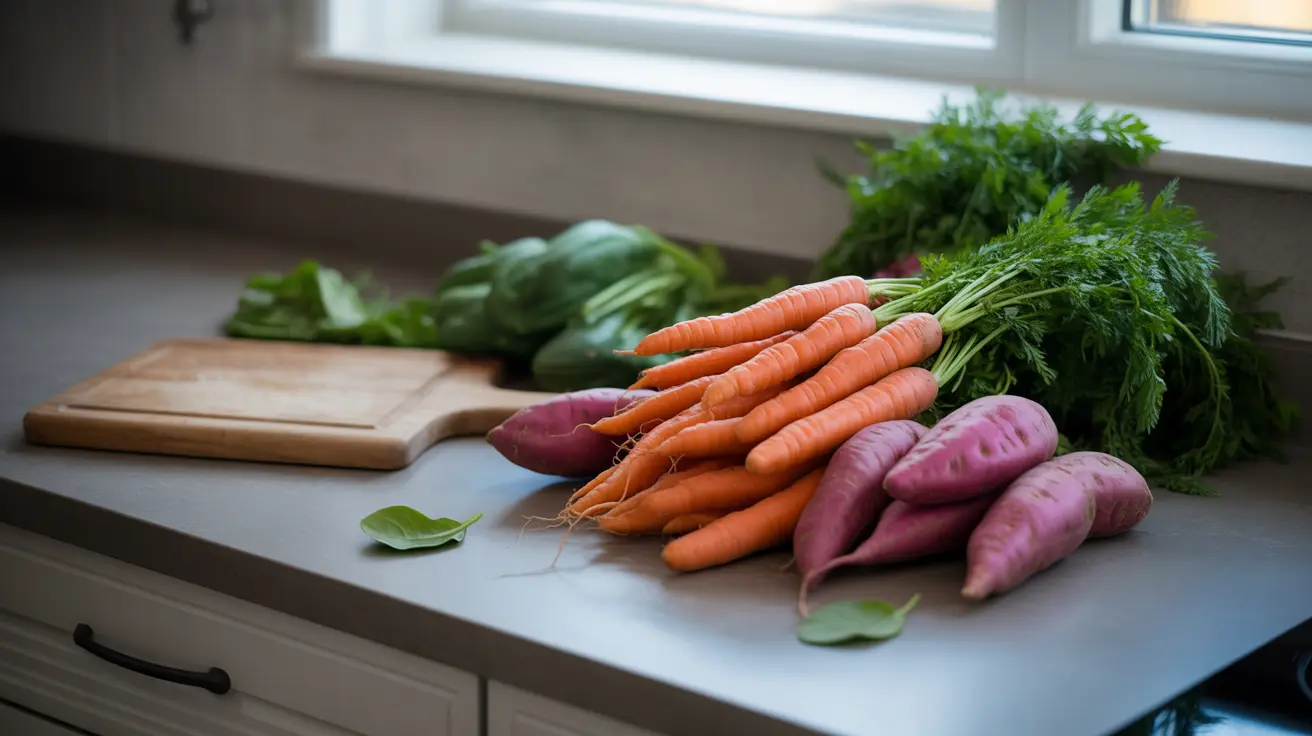Managing blood sugar levels effectively often comes down to making informed choices about the foods we eat, particularly when it comes to vegetables. Understanding the glycemic index of different vegetables can be a powerful tool in maintaining stable blood sugar levels, especially for people with diabetes or those focused on metabolic health.
In this comprehensive guide, we'll explore how different vegetables affect blood sugar levels, which options are best for blood sugar management, and how to make smart choices for your health.
Non-Starchy Vegetables: Your Low Glycemic Champions
Non-starchy vegetables are the cornerstone of a blood sugar-friendly diet. These vegetables typically have a glycemic index under 55, making them excellent choices for blood sugar management:
- Leafy greens (spinach, kale, lettuce)
- Cruciferous vegetables (broccoli, cauliflower, Brussels sprouts)
- Bell peppers
- Cucumber
- Celery
- Tomatoes
- Zucchini
These vegetables are not only low in carbohydrates but also rich in fiber, which helps slow down sugar absorption into the bloodstream.
Understanding Starchy Vegetables and Blood Sugar Impact
Starchy vegetables generally have a higher glycemic index and require more careful portion control:
- Potatoes (GI: 65-85)
- Sweet potatoes (GI: 44-61)
- Corn (GI: 52-75)
- Peas (GI: 48-51)
- Winter squash (GI: 41-75)
While these vegetables offer important nutrients, their higher carbohydrate content means they should be consumed in moderation, especially for those monitoring blood sugar levels.
Smart Portion Control for Glycemic Management
The key to managing blood sugar while enjoying vegetables lies in proper portion control:
- Non-starchy vegetables: 1-2 cups per meal
- Starchy vegetables: ½ to 1 cup per meal
- Root vegetables: ½ cup per serving
Remember that cooking methods can affect the glycemic impact of vegetables. Steaming or roasting with minimal added fats is generally preferable to frying.
Combining Vegetables for Optimal Blood Sugar Control
Creating balanced meals by combining different types of vegetables can help maintain stable blood sugar levels:
- Pair starchy vegetables with non-starchy ones
- Add healthy fats and proteins to slow down carbohydrate absorption
- Include fiber-rich vegetables in every meal
Frequently Asked Questions
What are the best low glycemic index vegetables for managing blood sugar in type 2 diabetes?
The best low glycemic index vegetables include leafy greens, broccoli, cauliflower, bell peppers, cucumber, celery, and tomatoes. These vegetables have minimal impact on blood sugar levels and are rich in fiber and nutrients.
How does the glycemic index of starchy vegetables like potatoes affect blood sugar levels?
Starchy vegetables like potatoes have a higher glycemic index, which means they can cause more rapid increases in blood sugar levels. Their carbohydrates are more quickly converted to glucose, requiring careful portion control and monitoring.
Can eating fruits and vegetables with low glycemic load help stabilize blood sugar for people with diabetes?
Yes, consuming fruits and vegetables with low glycemic load can help stabilize blood sugar levels. These foods release glucose more slowly into the bloodstream, preventing sudden spikes and crashes in blood sugar levels.
How do non-starchy vegetables compare to starchy vegetables in terms of glycemic index and blood sugar impact?
Non-starchy vegetables typically have a much lower glycemic index (below 55) compared to starchy vegetables (often above 60). This means non-starchy vegetables have minimal impact on blood sugar levels, while starchy vegetables can cause more significant increases.
What portion sizes of common vegetables are recommended to keep glycemic load low for diabetes management?
For optimal glycemic load management, aim for 1-2 cups of non-starchy vegetables per meal and limit starchy vegetables to ½-1 cup per meal. This helps maintain blood sugar control while ensuring adequate nutrition.




